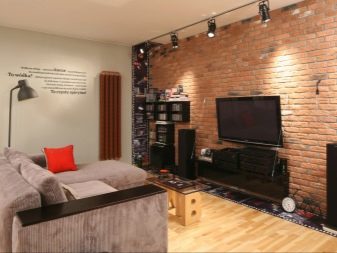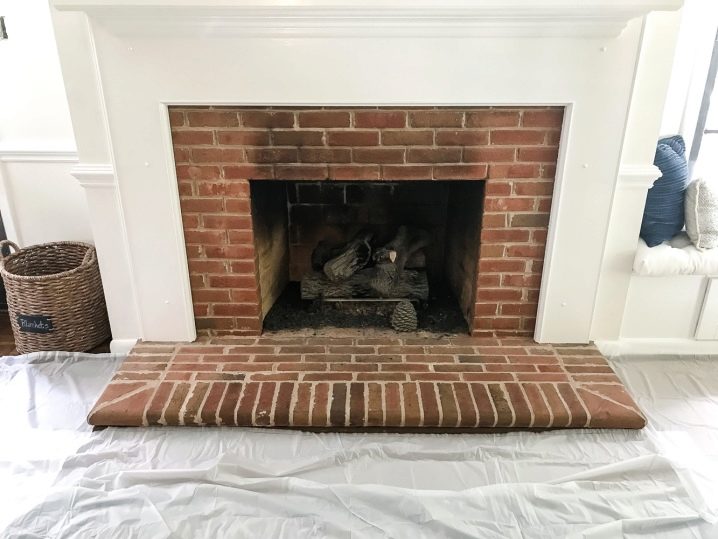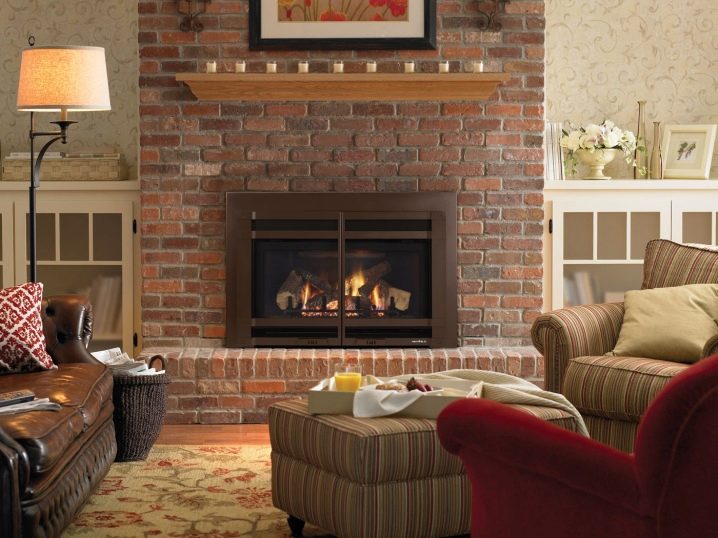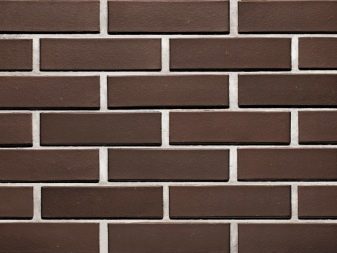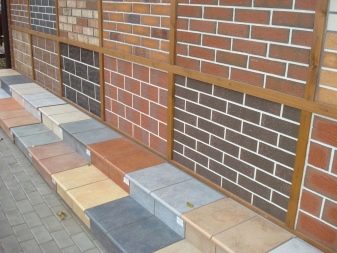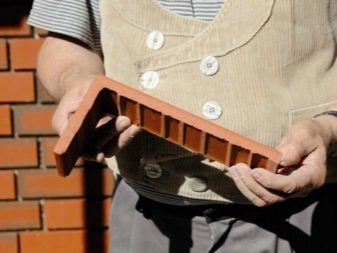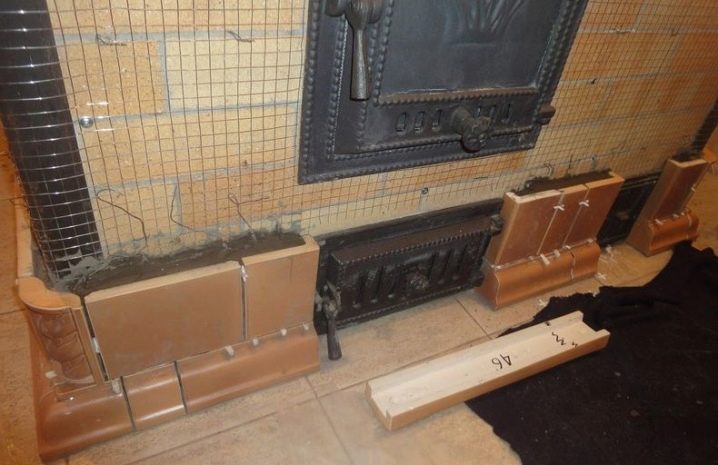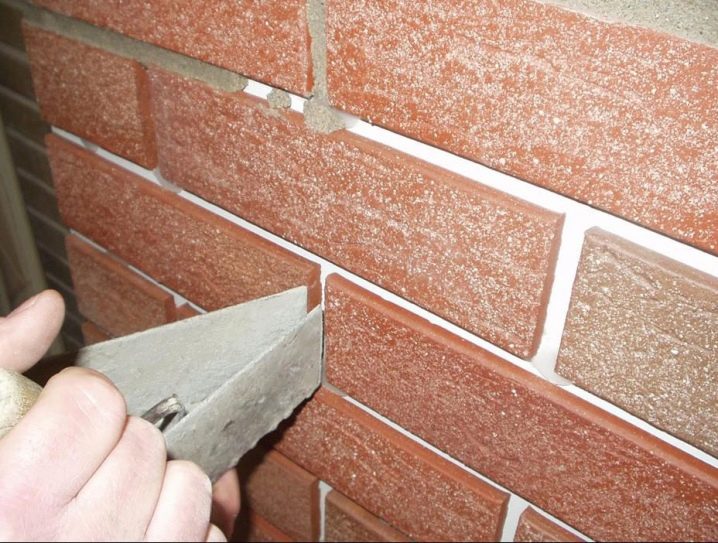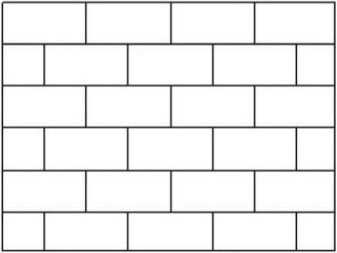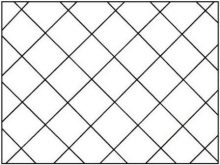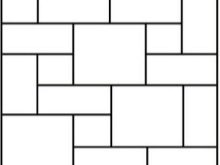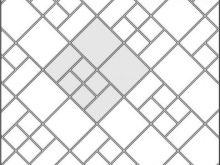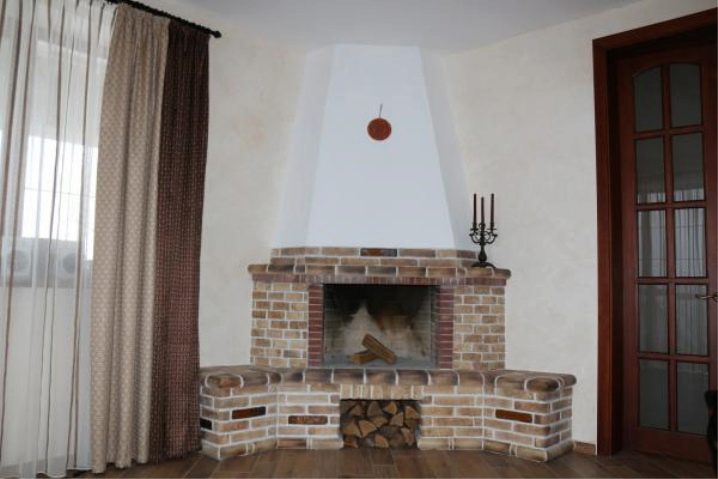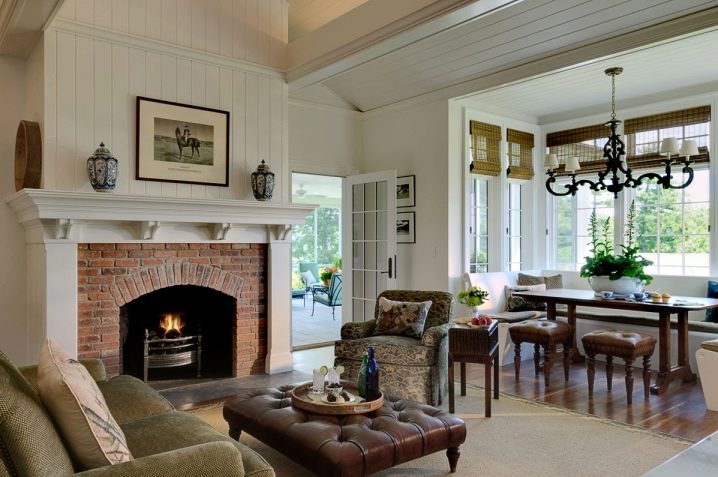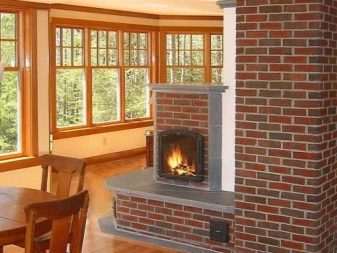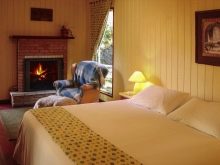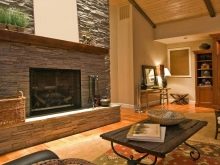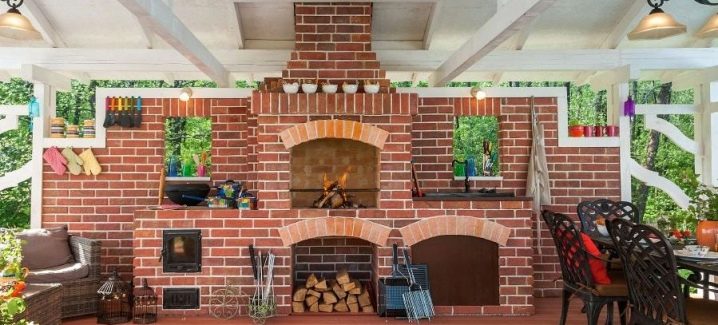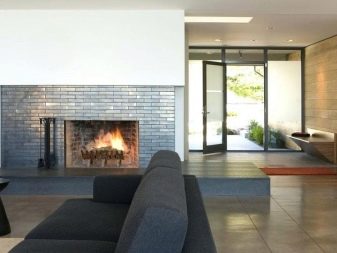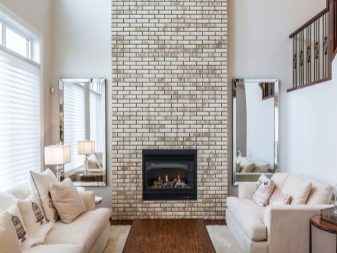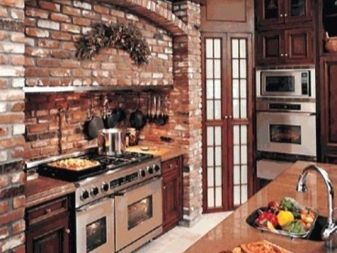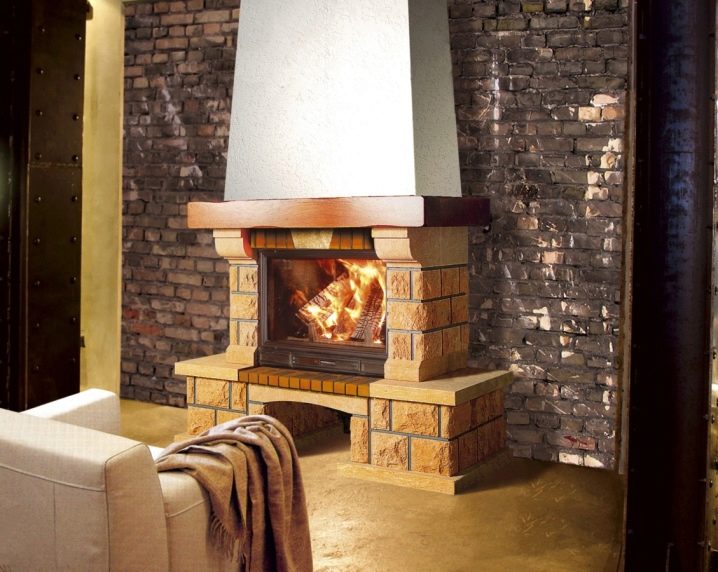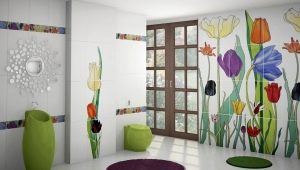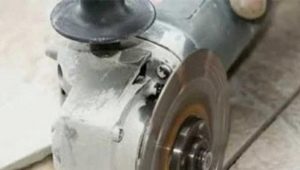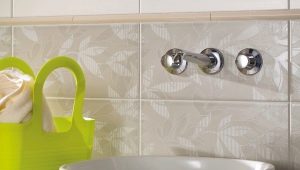Features of a brick tile for furnaces and fireplaces
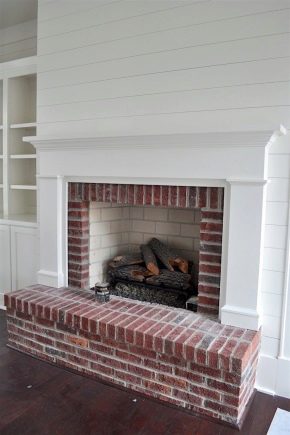
The brick tile has strongly occupied the niche in the market of building materials. It is used as a wall and floor covering both inside and outside the building. She trim the stairs, pools, stoves and fireplaces.
Properties and specifications
The brick tile represents one of types of artificial facing materials with dense uniform structure. It is made by roasting at high temperature (much higher than in the manufacture of conventional ceramic).
Why is a clinker tile for framing fireplaces and stoves so in demand - the numbers will show it perfectly:
- hardness indicator corresponds to eight (for comparison, a diamond has ten);
- on resistance to abrasion deserves the highest mark (four or five points out of a possible five depends on the type of tile);
- maintains three hundred cycles of complete freezing and subsequent thawing;
- minimum absorbency.
As a lining for a stove or fireplace, clinker is suitable due to compliance with the requirements, namely:
- heat capacity (well accumulates heat and gradually gives off);
- resistance to mechanical damage;
- wear resistance and durability;
- fire resistance and water resistance (important when close to an open fire and used in cooking);
- external aesthetics.
That is, such a product is very durable - it is practically impossible to damage it, its properties are not affected by cold, heat, chemical and household substances.
That is, such a product is very durable - it is almost impossible to damage, its properties are not affected by cold, heat, chemical and household substances.
Kinds
The main types of fireplace clinker tiles are:
- smooth (to achieve a perfect smooth surface, it is usually covered with a layer of glaze);
- relief (and the texture can be both pronounced, and slightly rough).
By relief can be attributed, and the model with the effect of aging.Such an imitation, though it looks as if it has already been used, but at the same time retains all its properties.
According to the method of production of clinkers can be:
- extruded;
- pressed.
In the first case of the plastic mass formed tiled elements. Then they are fired. In the second production method, the mixture is not a dough, but a powder. And the tile is formed not by an extruder, but under the influence of a press, after which it also undergoes heat treatment. The basis of the mixture in both versions are special grades of clay, and sand and other minerals, as well as plasticizers act as additives.
The color palette of clinker tiles for the hearth is quite extensive. Conventionally, depending on the color, clinkers can be divided into:
- colored (among such tiles you can even find pink ones);
- natural (their color will be as close as possible to the color of natural minerals).
All shades of yellow, brown and brick are natural. Other, more saturated and bright tones are achieved by adding coloring oxides to the composition.Tiles in the same batch may differ, this is due to the degree of heating of the material, the duration of baking and the position in the oven. As a rule, the regime with high temperature contributes to darkening and vice versa.
Color uniformity can only be achieved by coating it with a tint glaze.
According to the configuration, the clinkers intended for facing the fireplace can be divided into:
- tiled elements (which are usually given the geometric shape of a rectangle);
- individual components (plinths, plinths, corners) - they greatly simplify the process of finishing, especially in places requiring additional processing.
Installation
Procedure:
- First you need to purchase material with a margin. The calculation of the tile for the fireplace is more complicated than if it were a simple wall. To help in this matter can in a specialty store. Tiled elements of the same manufacturer, but purchased at different times, will differ.
- Then you need to prepare a work surface. If the oven has an old coating, it must be removed with a hammer, chisel, spatula or grinder.
- Then the surface of the fireplace or stove laying must be leveled, for this it is covered with plaster in several layers. It will take two spatulas and a rule. For a smoother application, you can use a reinforcing mesh, and for the corners there are special profiles. After plastering, a primer is applied with a roller.
- The next step is marking according to the chosen method of laying and fixing the supports. Marking is applied only when all layers of plaster and soil are dry. For this you need a level, a square, a tape measure and a construction pencil.
- Apply the solution on the plaster and evenly distribute with a notched trowel.
- Begin laying the first row. Again, it all depends on how the tile elements will be located. Constantly should be checked with the level. When deviations occur, the tile can be slightly displaced with a rubber-coated hammer.
- Between the tiles you need to install crosses to form smooth seams.
- After laying the whole tiles you need to do cut.
- Once the masonry has hardened, you can begin to grout. First you need to process the seams with a spatula. Then fill them with putty and level.The excess is removed with a float and a sponge moistened with water, and polished with a cloth.
Way of laying
There are several most popular options:
- Traditional - the most common way. The tiles are laid on the masonry of the fireplace in dense rows so that they are located exactly one above the other. It is especially important to observe symmetry.
- Scramble - reminds the traditional version, but in it every second row is offset by exactly half of the tiled element. Here the rectangular shape will look perfect. This method well hides the disadvantages of stove laying.
- Diagonal. It is based on a version with an offset, but the tile does not fit parallel to the base of the fireplace or stove, but at an angle. The main difficulties lie in wait here at the stage of marking and cutting.
- Modular (or block). Its main element is the combination of tiles. For example, if a block consists of two elements, they can be laid alternately parallel to the base or perpendicular to it. It is possible to combine clinkers of different sizes in a block. In addition, the blocks can be shifted and intertwined with each other. It all depends on fantasy.The main thing to remember is that the surface of the fireplace or stove is quite modest and the design of a complex installation on it is simply not visible.
- Combined - involves the alternation of rows with a horizontal and vertical position of the tile elongated shape.
In addition to the combination of tiles of different textures and colors, you can combine tile finishing with plaster. For example, she can finish the chimney or pipes, as long as they are in harmony with each other.
This coating is well combined with wood. The array of the fireplace shelf may have a similar or contrasting shade. In addition to it, metal plates and forged parts are often used as decor. Natural materials will always emphasize the external advantages of each other.
What influences the choice?
A few points worth paying attention to:
- It should be noted that clinkers have relatively low thermal conductivity. On the one hand, it helps the surface not to overheat. On the other hand, if the furnace is used as the sole source of heat, this option would not be suitable.Yet it is more suitable for a fireplace installed for beauty rather than heating.
- Extruded tile is more dense, so it accumulates poorly and gives off heat. In this case, the pressed elements are better supported by the climate in the room, since they have pores.
- Glazed coating does not tolerate temperature fluctuations.
However, sometimes it is better to put practicality at the forefront rather than aesthetics and give preference to a product without glaze.
- The dimensions of the tiles, even within the same batch, may not coincide, however, as well as the color. Therefore, careful selection is important here. Before buying a tile, be sure to compare, especially if symmetry is important in the design, and any deviation will be evident.
- At integrity violation the heat-resistant tile will lose a part of the properties. Even if scratches or chips are on the invisible side, it is better to replace such products.
- For stove and fireplace, tile thickness is important. It should be more than eight millimeters.
Examples in the interior
Despite the possible options, the clinker tiles are very specific. And the use for decorative decoration of the fireplace further narrows the range of design solutions.
The fireplace or stove is not installed in all rooms. As a rule, most often, fireplaces lined with clinker tiles are placed in the living room, hall or dining room, where all family members or guests can enjoy the contemplation of a live fire. Also, fireplaces are not uncommon in bedrooms, as they have a beneficial effect on the psycho-emotional state - they help to relax, create an atmosphere of comfort.
Of course, its placement largely depends on the size - it can be built-in or stand-alone. Clinker tiles can turn it into the most striking object that attracts all views to itself, or, conversely, make its image restrained.
Undoubtedly, such building structures look especially organic in the kitchen. As a rule, it can be a small decorative version, and a full-fledged Russian stove with a stove bench, with or without the possibility of cooking.
Motifs of the hearth will come in handy in hotels, restaurants and cafes to make guests feel particularly comfortable.
The heat-resistant clinker cladding can extend not only to the fireplace area, but also to the adjacent wall as a whole or part of it.First of all, this approach is used when finishing tiles built-in models. The decor in the form of clinker tiles can create a picturesque, cozy corner in the recreation area.
Oven and fireplace with clinker tiles, due to their features, can be entered if not in all, then in many areas of design.
In modern minimalism, such an object will definitely not be superfluous and even, despite all the conservatism, will become the central figure of the whole composition. With the right combination of textures and colors, clinker will fit perfectly into the interior, created in the style of high-tech.
The interior, made in the style of Provence or Country, is simply unthinkable without the hearth. It creates a warm atmospheric background, adjusts for closeness to nature. In the rustic style close to these areas, one can see whole fireplace complexes in which the refractory clinker tile is perfectly combined with other natural materials.
The curves of the forms and unusual combinations of Art Nouveau style will be reflected in the design of the hearth. The interior sustained in one style will be distinguished by refinement and refinement.
How to impose a clinker tile oven, you will learn from the following video.
